Bamboo Futures, an installation at London’s V&A Museum for London Design Festival, explores the model-making process of Canadian-Indonesian architect Elora Hardy of IBUKU.

Elora Hardy (photo by Alexander Berg) and detail of Green Village, Temple House (photo by Keiko China, Nacasa & Partners)
October 3rd, 2019
When Canadian-Indonesian architect Elora Hardy, founder of Bali-based practice IBUKU, designs a building, she doesn’t create conventional blueprints. Instead, her studio crafts to-scale structural models made of hand-whittled bamboo sticks.
These miniature buildings are then used by specialist artisans as the blueprints to build her idiosyncratic bamboo structures – from the Green Village project that led to the founding of IBUKU in 2010 to the fantasy jungle escape of Sharma Springs residence.
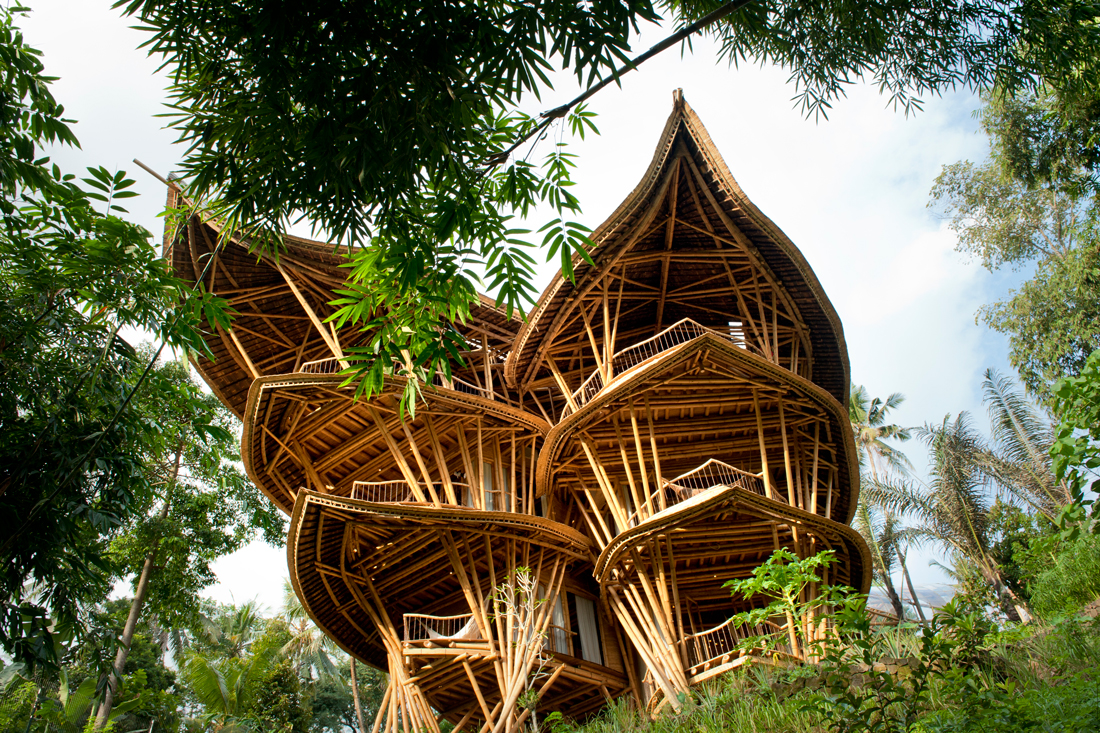
Sharma Springs. Photo by Rio Helmi
For the first time, a collection of eighteen of these models were exhibited together, exploring how IBUKU’s model making has been integral to the creative process over the past decade. The installation, Bamboo Futures, was on show at the Victoria & Albert Museum in London from 14-22 September as part of London Design Festival 2019.
“Model making is so important because the model itself is the blueprint of the house,” says Hardy. “We bring the model to the site and with tiny rules we measure each pole, and consider each curve, and we choose a piece of bamboo from the pile to replicate that house on the site.”
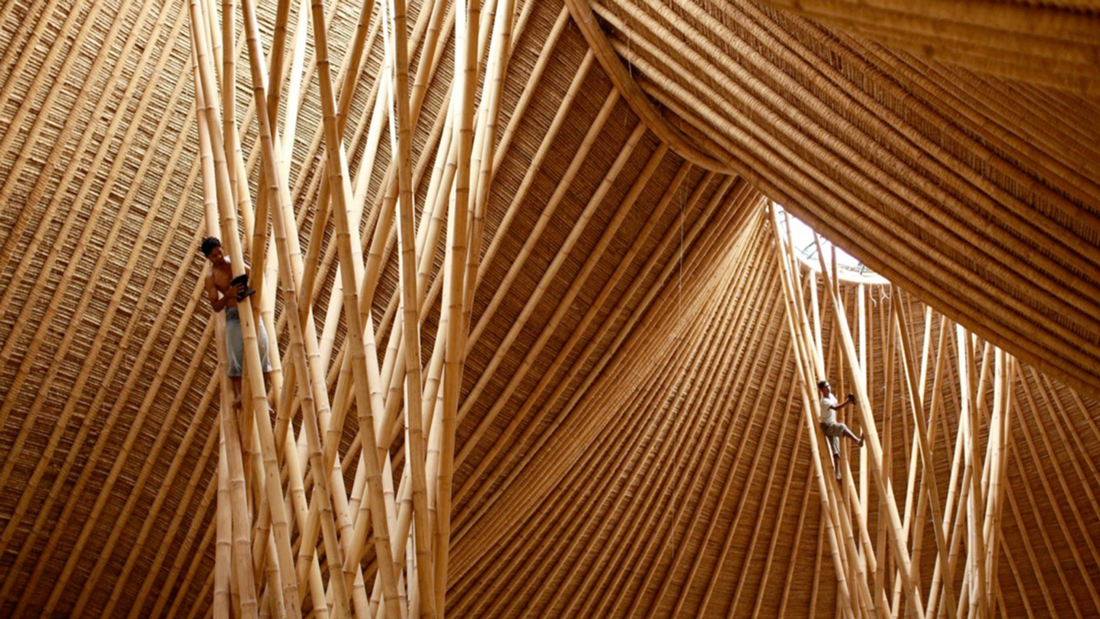
Construction process
Hardy is a master of building with bamboo, creating fantastical structures that soar skyward in harmony with nature. These twisting, curvaceous buildings defy convention and appear to have sprung from a world of fairytales and magic. And, in some ways they have.
In her 2015 TED Talk, ‘Magical Houses, Built From Bamboo’ – which has had over 4.5 million views – Hardy opens with a story about her childhood. “When I was nine years old, my mom asked me what I would want my house to look like, and I drew this fairy mushroom,” she says.
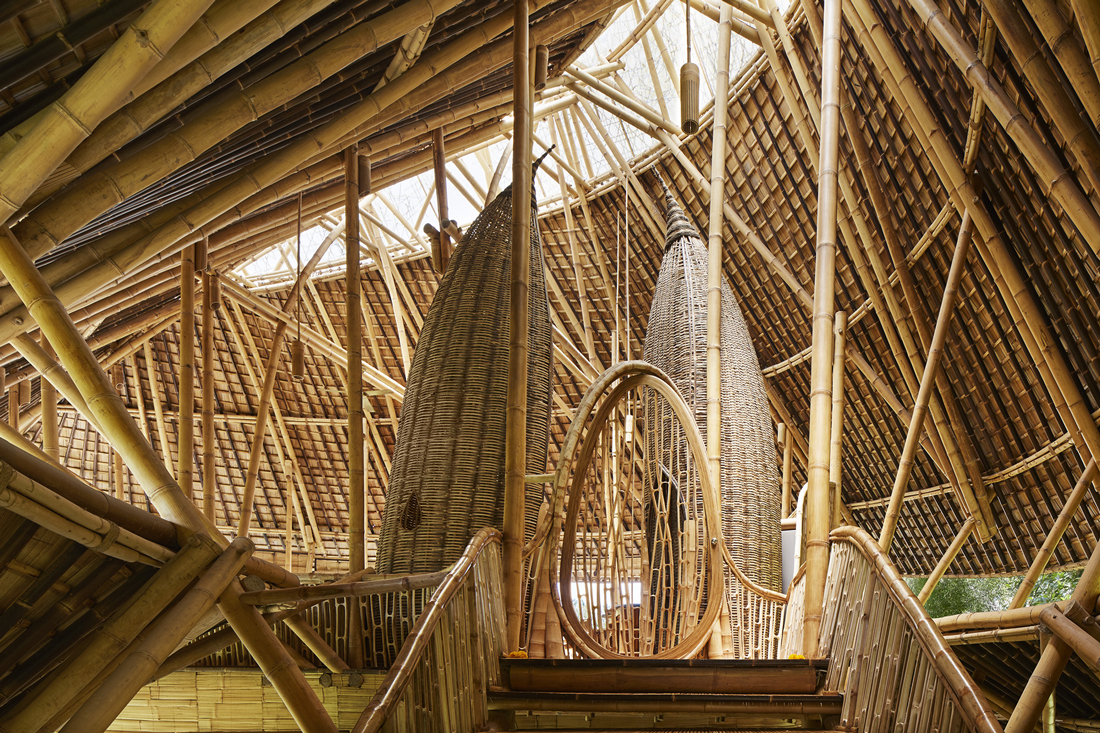
Green Village, Temple House, photo by Keiko Chiba (Nacasa & Partners)
“And then she actually built it. I don’t think I realised this was so unusual at the time, and maybe I still haven’t, because I’m still designing houses.” All these houses are built from bamboo, and many of them still resemble that first fairy mushroom house.
“I feel excited about the possibilities of building with bamboo,” says Hardy. “It is plentiful, it grows quickly and easily, and is uniquely versatile. Our conscience is clear and the world is cleaner and more beautiful for it.”
Despite the benefits listed by Hardy, bamboo has had a reputation around the world for being suited primarily to short-term structures. According to Hardy, however, this is because it is not properly treated or designed. IBUKU sources its bamboo from across Bali and Java, and safely treats it against insect attack with a natural salt solution. The team of architects and engineers then tests the bamboo rigorously to ensure the safety and longevity of the structure.
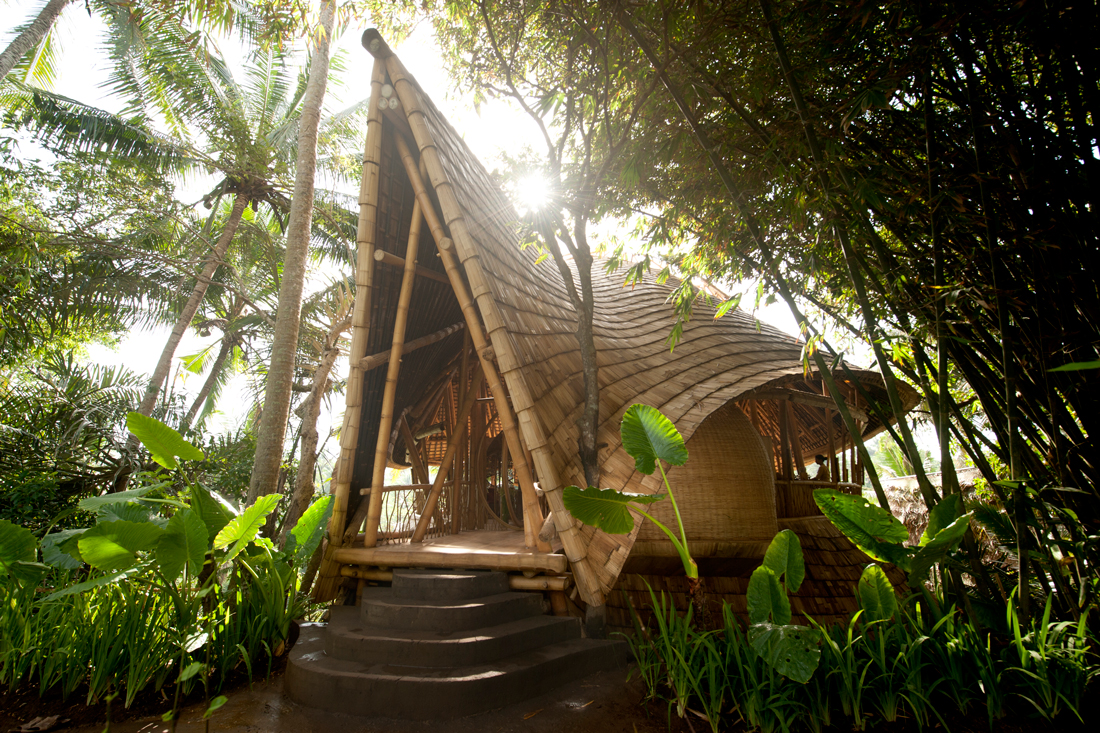
Green Village, Sunrise House, photo by Rio Helmi
“Similarly to wood, a well-designed and well-maintained structure built from properly treated bamboo can be expected to last for many decades,” says Hardy.
She is not the only architect championing bamboo. Also at the V&A as part of the London Design Festival, Japanese architect Kengo Kuma created a sculptural installation exploring how carbon fibre and bamboo can be used together to create strong, flexible structures.
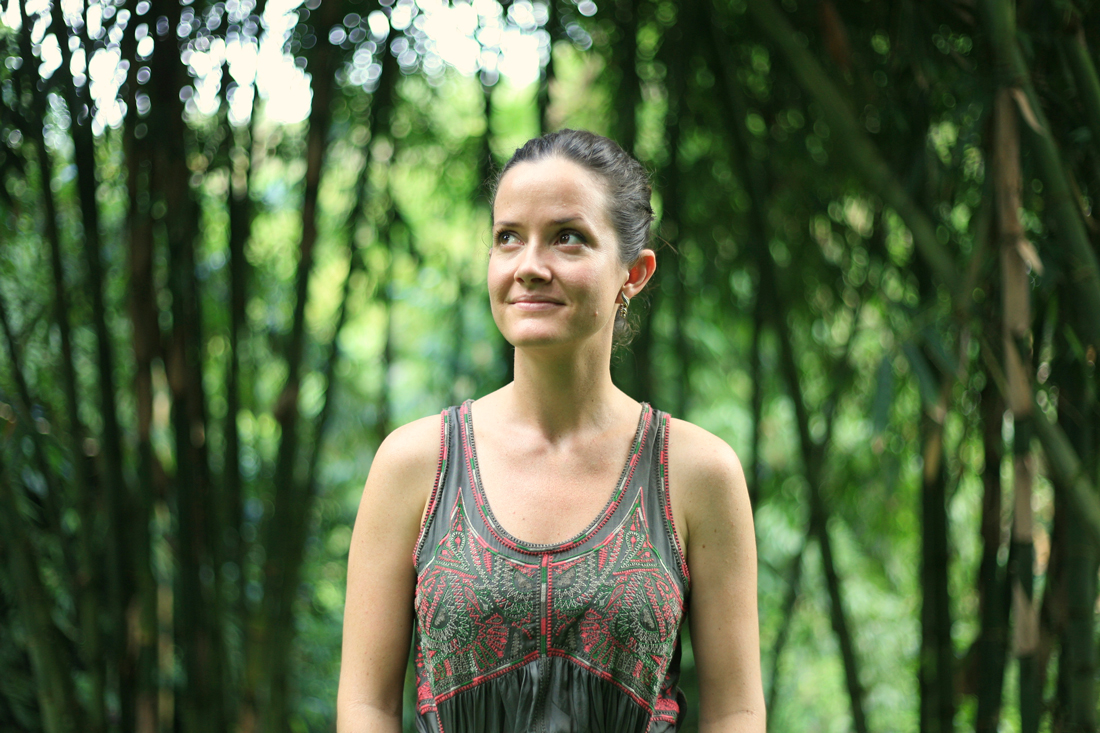
Elora Hardy, photo by Eka Wiradana
As the title of the exhibition – Bamboo Futures – suggests, Hardy, like Kuma, believes that bamboo has many more applications as a building material for the future.
“Engineers, architects and designers have now created a completely new design vocabulary,” says Hardy. “Bamboo is a strong, beautiful and flexible material with a short growth cycle and it allows us to build lightly on the land with a clear conscience. Not only is bamboo good for the environment, but it also helps the people living in the space to connect with nature.”
A searchable and comprehensive guide for specifying leading products and their suppliers
Keep up to date with the latest and greatest from our industry BFF's!

Elevate your outdoor spaces with pieces that are beautiful, functional, and engineered for you.

The Man x Machine x Material collaboration by Jarrod Lim and The American Hardwood Export Council explores how generative AI can enhance design processes while also revealing the areas where human intuition remains irreplaceable.

BLANCO launches their latest finish for a sleek kitchen feel.

With the exceptional 200 Series Fridge Freezer, Gaggenau once again transforms the simple, everyday act of food preservation into an extraordinary, creative and sensory experience, turning the kitchen space into an inspiring culinary atelier.

The latest iteration of Tanatap deploys walls as a key architectural device to create both a cooler microclimate and elevated spatial experience.

Lasvit delivers ‘Sound of Light’ installation for St. Regis Jakarta, a dynamic glass and light display that responds to music.

The Vietnamese architect discusses insatiable construction markets and dwindling urban ecologies. For the latter, he recommends bamboo; for the former, meditation.
The internet never sleeps! Here's the stuff you might have missed

The theatrical approach of the Landmark by Lexus pavilion, designed by Brahman Perera, reflects the brand’s role as a global disruptor in luxury.

UNSW Galleries is set to host ‘barangga: First Nations Design Gathering,’ a two-day event focused on integrating Country into public art on October 25-26th.